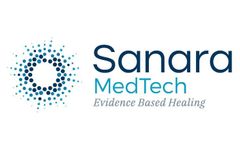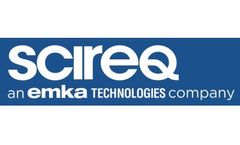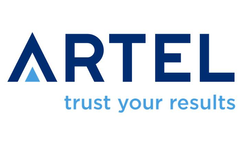Cell Morphology Mesenchymal Stem Cells Articles & Analysis: Older
132 articles found
Cytokines are a diverse group of small protein molecules that play crucial roles in the immune system and various biological processes. They are synthesized and secreted by a range of immune cells, including monocytes, macrophages, T cells, B cells, and natural killer (NK) cells, as well as certain non-immune cells like endothelial cells, epidermal cells, and fibroblasts. Cytokines are produced ...
Human umbilical cord cells, particularly those found in Wharton’s jelly, have emerged as a focal point in regenerative medicine and cellular therapy. Wharton’s jelly is a gelatinous substance that surrounds the umbilical cord’s blood vessels, providing structural support and protection. It is rich in mesenchymal stem cells (MSCs), which are known for their unique regenerative ...
Human corneal epithelial cells play a vital role in maintaining the health and function of the cornea, the transparent front part of the eye. This layer of cells acts as a protective barrier against environmental insults, pathogens, and mechanical injury. Given their crucial functions, understanding these cells is essential for advancements in ophthalmology and regenerative medicine. The corneal ...
GMP growth factors and cytokines designed for therapeutic manufacturing are an essential component of defined media. To date, the cell therapy industry has accepted GMP terms for this reagent class, despite the fact that there is no direct oversight by regulators. These proteins are intended for use in further manufacturing processes and do not come into direct contact with patients. In fact, ...
Cell culture is one of the major technologies in the life sciences. It is a general term used to remove cells, tissues or organs from animals or plants and place them in an artificial environment conducive to their survival and/or proliferation. The basic environmental requirements for optimal cell growth are: controlled temperature, substrate for cell attachment, appropriate growth medium and ...
Human brain has approximately 171 billion cells, of which slightly more than half (approximately 86 billion) are nerve cells. These 86 billion nerve cells are a diverse cell population with hundreds of specialized types and functions, but all originate from three neural cell lineages--neurons, oligodendrocytes and astrocytes. All three cell lineages originate from a pool of neural stem and ...
Background CellRight Technologies® has developed ACTIGEN™ Verified Inductive Bone Matrix, a dehydrated, verified inductive matrix that may be hydrated with saline, blood, Bone Marrow Aspirate (BMA), Platelet Rich Plasma (PRP), or other cellular components in accordance with a physician’s well-informed medical judgment. The clinician may add allograft or autograft to ...
Custom mRNA production has emerged as a cutting-edge technology in the field of molecular biology, offering researchers the ability to tailor-make specific messenger RNA molecules for various applications such as vaccine development, gene therapy, and regenerative medicine. This innovative process holds great promise in unlocking new possibilities in scientific research, paving the way for ...
Autophagy is a highly conserved catabolic process in which long-lived cytoplasmic components or damaged organelles are sequestered by the formation of double-membraned autophagosomes. Mature autophagosomes ultimately fuse with lysosomes to form single-membraned autophagolysosomes that degrade or recycle their contents. Upon autophagy initiation, microtubule-associated protein 1 light chain 3 ...
CRISPR/Cas9 PlatformCB provides a point mutation cell line generation service for various cell lines, such as tumor cell lines and stem cell lines. As a provider of genome editing service, CRISPR/Cas9 PlatformCB focuses on using the latest technique to serve customers. With years of experience, our scientist team is expert in generating knock-in stable cell lines with CRISPR. At CRISPR/Cas9 ...
One of the first steps in drug development and toxicity testing is creating cell models on which to evaluate the effects of chemical compounds on cellular, molecular and biochemical processes of interests. Stem cells or stem cell-derived downstream cells are the best choice to establish cell models to evaluate new compounds because they are patient-matched. Creative Bioarray provides customers ...
The process of iPSC differentiation to neurons and neuronal cells is of special importance for neurobiology and related disorders, considering the dearth of clinically relevant in vitro models available for research, drug screening and development, as well as the lack of therapy to reverse neuronal damage. Benefits and advantages of iPSC differentiation to neural stem cells (NSC), neurons and ...
Immortalized cell lines and services are of ever-increasing importance in various aspects of biomedicine, toxicology and biotechnology. The cells can be used as model systems in phenotypic and drug screening, high content analysis, target identification, drug development, toxicology testing, gene editing studies, reporter assays. Besides, the immortalized cells have implications for the ...
The three main components of tissue engineering applications are scaffold, cell and growth-stimulating signals. Collagen has been widely used in the clinical field due to its abundance in nature, biocompatibility, low antigenicity and biodegradability. In addition, the high tensile strength and fibril-forming ability of collagen enable it to be made into various forms such as tissue grafts, ...
Pulmonary fibrosis, particularly idiopathic pulmonary fibrosis (IPF), represents a significant challenge in healthcare due to its detrimental impact on lung function and limited treatment options. While WNT/β-catenin signaling plays a crucial role in lung development and maintenance of adult lung stem cells, its dysregulation has been associated with pulmonary fibrosis. However, recent ...
MSCs exhibit specific morphology, which makes them unique compared to other cell types typically used in CLD. While forming spindle-shaped, elongated, and transparent cell projections, the MSCs can pose a significant challenge when it comes to imaging and subsequent image analysis. Many imaging systems on the market are simply not fit for precise detection of these unusual cell types. ...
Introduction For years, scientists have leveraged the brilliant potentialities of genetic science to explore how cells function and interact in living organisms. Among the numerous tools employed are "reporter systems," which use a visible marker to track gene expression, protein interactions, and other vital biological processes. One such system employs reporter lentiviral particles, using the ...
Rare diseases, also known as orphan diseases, are a diverse group of disorders that affect a small percentage of the population. Due to their low prevalence and limited understanding, treating and finding cures for these conditions present significant challenges. However, preclinical animal models have emerged as invaluable resources for advancing research and unraveling the mysteries surrounding ...
Bio-ink is a revolutionary material that is rapidly changing the fields of medicine, tissue engineering, and even bioprinting food. This fascinating substance is essentially a type of ink made from living cells and other biocompatible materials that can be used to 3D print complex biological structures. What is Bio-Ink Made Of? The composition of bio-ink can vary depending on the desired ...
ByMatexcel
Cytokines are a broad class of tiny proteins that are essential for controlling inflammation and immunological responses. Numerous cell types, including fibroblasts, endothelial cells, immunological cells, and epithelial cells, produce these signaling molecules. Serving as intermediaries, they synchronize various cell functions to elicit the body's defense mechanisms against infections, tissue ...











